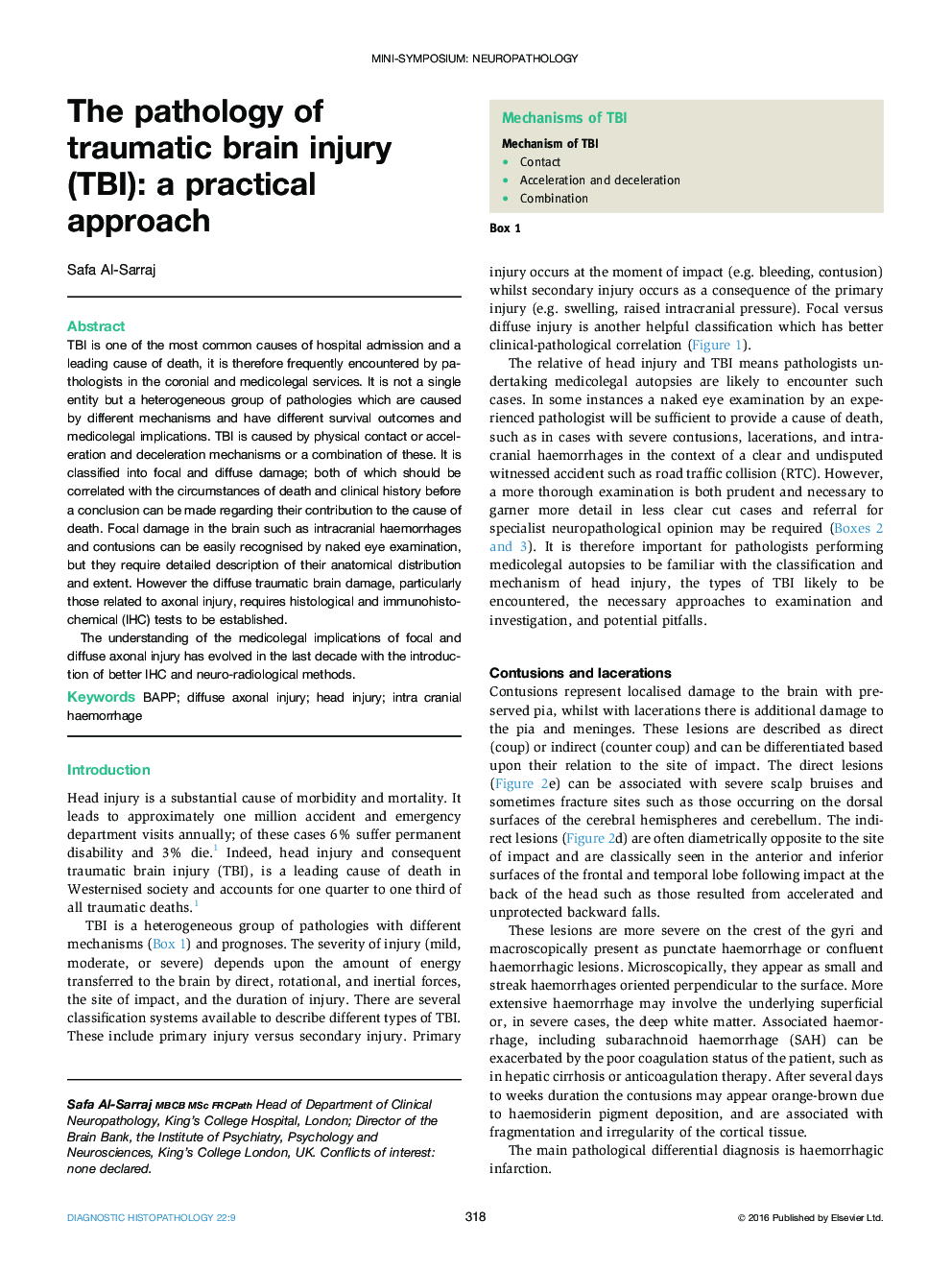| Article ID | Journal | Published Year | Pages | File Type |
|---|---|---|---|---|
| 4130947 | Diagnostic Histopathology | 2016 | 9 Pages |
TBI is one of the most common causes of hospital admission and a leading cause of death, it is therefore frequently encountered by pathologists in the coronial and medicolegal services. It is not a single entity but a heterogeneous group of pathologies which are caused by different mechanisms and have different survival outcomes and medicolegal implications. TBI is caused by physical contact or acceleration and deceleration mechanisms or a combination of these. It is classified into focal and diffuse damage; both of which should be correlated with the circumstances of death and clinical history before a conclusion can be made regarding their contribution to the cause of death. Focal damage in the brain such as intracranial haemorrhages and contusions can be easily recognised by naked eye examination, but they require detailed description of their anatomical distribution and extent. However the diffuse traumatic brain damage, particularly those related to axonal injury, requires histological and immunohistochemical (IHC) tests to be established.The understanding of the medicolegal implications of focal and diffuse axonal injury has evolved in the last decade with the introduction of better IHC and neuro-radiological methods.
